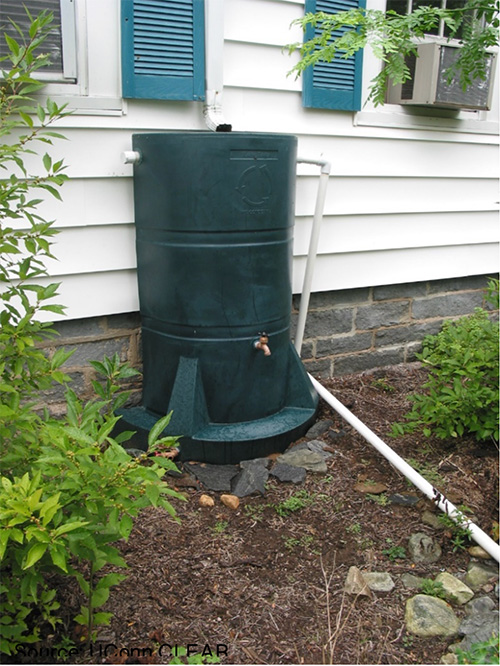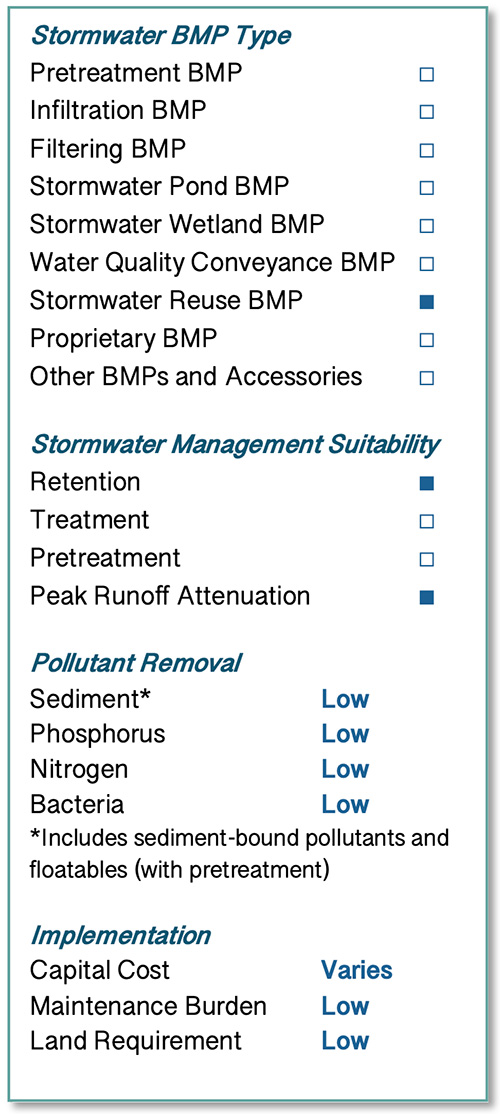Rainwater harvesting involves the collection of rainwater from rooftops and other impervious surfaces and storage of the rainwater in a rain barrel or cistern for non-potable use. Rainwater harvesting practices are extremely versatile and scalable from small-scale residential applications to large-scale commercial or industrial sites. Collection systems can be located outside, inside, above or below the ground and can be designed in a variety of shapes and sizes to fit the site conditions.
Rainwater harvesting systems generally consist of five main components: catchment, conveyance, pretreatment, storage, and distribution. Catchment areas include clean roofs (rain barrels and cisterns) and other impervious surfaces (cisterns only). Pretreatment is required for larger harvesting systems (cisterns) to remove stormwater pollutants from paved surfaces and to remove leaves, debris, and other coarse solids from roof runoff. Storage can be in a prefabricated or custom-built above or below ground system, and either detached or structurally integrated with a building. Finally, distribution systems can range from garden hoses on a rain barrel, to plumbing or underground irrigation systems associated with a cistern.
Rain barrels are storage containers that are connected to a downspout and capture runoff from a roof. Rain barrels are typically sized to retain 50-100 gallons of irrigation water for gardening and landscaping. Many different types of rain barrels are commercially available. Although they primarily function as storage for stormwater reuse, rain barrels can help to control localized drainage issues and reduce the effects of small-scale point discharge, such as scour at the outlet of a roof drain system.
Cisterns have a greater storage capacity than rain barrels and may be located above or below ground. Cisterns typically collect runoff from areas larger than residential rooftops such as roof areas of larger buildings or parking lots. Stored water is fed by gravity or pumped via a distribution system to the point of use. Unlike rain barrels, cisterns can provide some peak runoff attenuation depending on the size of the system and the volume of water in the cistern at the start of a storm event.

